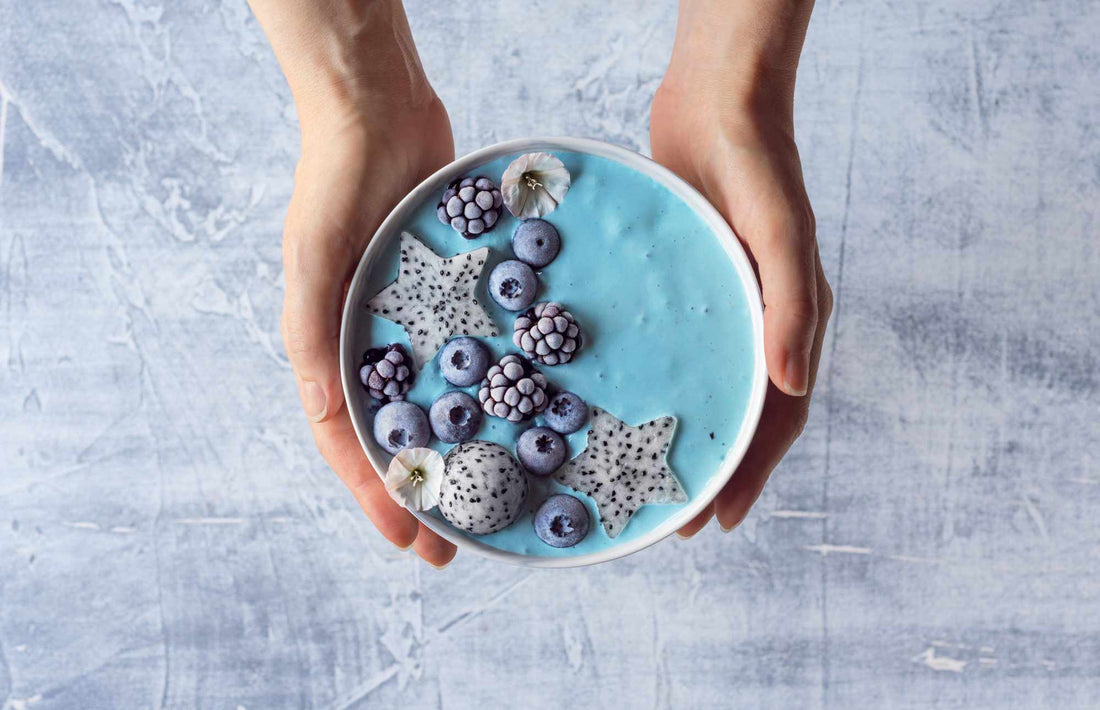
Blue Matcha
Share
When I first heard of blue matcha, I was quite confused as a long-time matcha fan. But then I discovered that it’s not really matcha at all—it’s butterfly pea tea!
Although I was initially disappointed that “blue matcha” had nothing to do with my favorite drink, I decided to dive deeper into it. Along the way, I even created my own recipe for a blue matcha blend that actually includes real matcha, as it should!
Breaking Down Blue “Matcha”
Blue matcha is a vibrant blue beverage that is commonly enjoyed as tea, juice, or in smoothies. Unlike traditional matcha, which is made from green tea leaves, blue matcha is derived from the butterfly pea flower, a plant native to Asia. The flowers are dried and ground into a fine powder, which can be mixed with hot water or milk to create a variety of colorful drinks.
Blue matcha is rich in antioxidants and is naturally caffeine-free. It may also help lower cholesterol levels after meals. While it shares part of its name with traditional matcha, the two beverages are quite different. Keep reading to learn more about blue matcha, its potential benefits, and how to incorporate it into your diet.
What Are the Benefits of Butterfly Pea Tea?
Butterfly pea tea has not been extensively studied, but it is known to be rich in antioxidants, which have well-documented health benefits.
Blue Matcha’s Antioxidants
Blue matcha contains anthocyanins, a type of flavonoid also found in blueberries, blackberries, cherries, and black rice. Anthocyanins may help with:
-
Tissue repair
-
Reducing the risk of heart disease
-
Improving vision
-
Lowering cancer risk
-
Reducing inflammation
Antioxidants in general play an important role in protecting against free radicals, which can cause cell damage. Those with autoimmune diseases and gut conditions may have more oxidative stress and could benefit from additional antioxidant consumption.
Other beneficial compounds found in butterfly pea tea include:
-
Kaempferol: Extensively studied for its cancer-fighting properties.
-
p-Coumaric acid: May have anti-inflammatory, antimicrobial, and antiviral effects.
-
Delphinidin-3,5-glucoside: Some studies suggest it may help stimulate immune function and trigger cell death in colorectal cancer cells.
Butterfly Pea and Heart Health
High cholesterol is a risk factor for heart disease and stroke, and high-fat meals can elevate cholesterol levels in the blood. A 2019 study found that butterfly pea tea may reduce the body’s response to high-fat meals. However, the study only involved 16 participants, so more research is needed.
Hair and Skin Health
Due to its antioxidant properties, butterfly pea may have benefits for skin and hair when applied topically. A 2021 study found that using butterfly pea extract on the skin could increase hydration by 70% within one hour.
In Thai culture, butterfly pea has been traditionally used for hair health, though scientific studies are limited. A 2012 animal study found that butterfly pea extract might be more effective at promoting hair growth than minoxidil, a common hair loss treatment. However, since this study was conducted on rats, more research is required to confirm its effectiveness in humans.
Ways to Use Butterfly Pea
There are several ways to enjoy butterfly pea tea (aka blue matcha):
-
Brew it as a tea and serve it hot or over ice with soy milk.
-
Mix it into a matcha latte for a beautiful two-tone effect.
-
Add lemon or lime juice for a fun color-changing trick (turns vibrant purple!).
-
Blend it into smoothies for an extra pop of color.
Blue Matcha Is Really Just Butterfly Pea—But Still Worth Trying!
While blue matcha shares a name with traditional matcha, they are entirely different. Traditional matcha is a finely ground green tea powder made from the Camellia sinensis plant, whereas blue matcha is made from butterfly pea flowers. Blue matcha is naturally caffeine-free, contains antioxidants, and may help reduce cholesterol levels after meals.
If you’re interested in trying blue matcha, you can purchase butterfly pea powder or dried flowers and experiment with different drinks and recipes. To make tea, simply steep dried butterfly pea flowers in hot water. You can also add the powder to matcha lattes, smoothies, and other beverages for a colorful and nutritious twist.
My Favorite Blue Matcha Recipe
I like to make a layered drink using both butterfly pea tea and matcha. Here’s how:
-
Steep butterfly pea flowers in hot water for 10 minutes.
-
Prepare a matcha latte separately.
-
Fill a glass with ice.
-
Pour the matcha latte into the glass first, followed by the butterfly pea tea.
This creates a stunning, layered effect while combining the best of both worlds—real matcha and vibrant blue butterfly pea tea!

